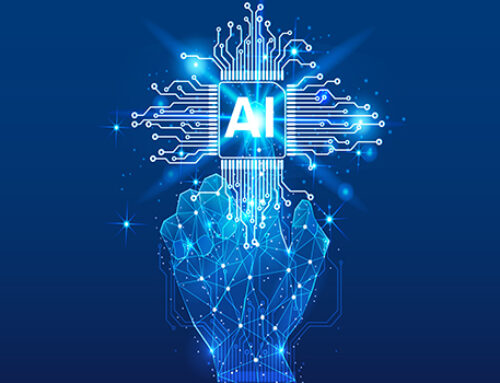In a world where artificial intelligence (AI) is advancing rapidly, companies are constantly seeking efficient ways to integrate these technologies into their operations. One of the most notable innovations is the ability of AI agents to automatically select the most suitable tool for a specific task, based on minimal user input. This capability, integrated within the LangChain framework, opens up new possibilities for developing more complex and centralized solutions.
What does it mean for an AI Agent to select the right Tool?
Imagine having a virtual assistant to whom you simply state your need, and it determines the best tool to accomplish the task. There is no need to be familiar with all the available applications or know how to use them; the AI agent takes care of the entire process. This is possible because, by providing information about different functionalities and tools, the agent can analyze the problem and select the most efficient option to resolve it.
This concept is explored in depth in the article “LangChain Agents: Prompt Design for Efficient Tool Selection,” which demonstrates how agents can incorporate multiple tools to select the one that best fits a specific need.
LangChain: The platform that makes it possible
LangChain is a framework designed to create AI agents efficiently and effectively. Its integration allows these agents to access and utilize different tools based on the specific needs of each task. This means that complex systems do not need to be built from scratch; LangChain provides the necessary infrastructure for agents to function optimally.
Types of tools an AI Agent can sselect
AI agents integrated with LangChain can choose from a wide range of tools to meet the specific needs of your business. Examples include:
- Data Analysis Tools: Such as SQL, Python (pandas, NumPy), or Business Intelligence software like Tableau and Power BI, for data processing and visualization.
- Communication Applications: Sending emails, notifications via Slack or Microsoft Teams, and managing chatbots for customer support.
- Content Management Systems (CMS): Updating and managing content on websites or digital platforms like WordPress or Drupal.
- Process Automation Tools: Such as Robotic Process Automation (RPA) for automating repetitive tasks.
- Cloud Services: Managing and deploying resources on platforms like AWS, Azure, or Google Cloud.
Practical examples of solutions managed by intelligent agents
Example 1: Customer Service in Retail – Order Tracking
- Need: “A customer wants to know the status of their order.”
- Solution with the Intelligent Agent:
Accessing the company’s order management system, the agent retrieves the status of the customer’s order (e.g., using Salesforce, SAP, or another order management tool). It then provides the customer with immediate information on the order status, estimated delivery date, and any related issues.
Example 2: Process Automation in Production – Generating a Purchase Order
- Need: “Generate a purchase order quickly for the production process.”
- Solution with the Intelligent Agent:
Through interaction with the company’s ERP system (e.g., SAP or Odoo), the agent gathers necessary data, such as inventory levels, pending orders, and specific requirements. Once verified, it generates a purchase order for the production process and sends it to the relevant department.
Example 3: Sales Management – Internal Data Review
- Need: “Review recent sales information to support decision-making.”
- Solution with the Intelligent Agent:
To retrieve the most recent sales data, the agent connects to the internal sales database or a Business Intelligence (BI) system such as Tableau or Power BI. It then presents a summarized report with key figures, sales graphs, and relevant trends for quick and effective review.
Why is this important for technology leaders?
For technology leaders, this innovation presents an opportunity to drive the digital transformation of their organizations. By adopting AI agents that can select the best tool for each situation, businesses can:
- Stay Competitive: Incorporating cutting-edge technology keeps them at the forefront of their sector.
- Optimize Resources: Improved operational efficiency reduces costs and maximizes return on investment.
- Foster Innovation: With automated and centralized processes, teams can focus on developing new ideas and projects.
Business optimization with AI: Automation, Efficiency, and Centralization
The ability of AI agents to automatically select the most appropriate tools represents a significant shift in the world of artificial intelligence. With frameworks like LangChain, this technology becomes accessible, enabling companies to create sophisticated and efficient solutions. For IT departments, it is an opportunity to optimize resources, streamline processes, and remain at the forefront in a highly competitive business environment.
At Quantion, we bring generative AI and other advanced technologies to businesses, integrating solutions like LangChain to optimize processes and drive digital transformation, fostering innovation and efficiency in every project.


